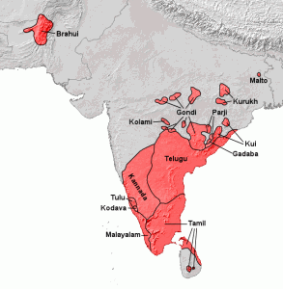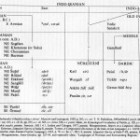We all think a Hindu is a person who practices Hinduism – for this is what a person outside of India thinks. Historically, the term described the people living near the Indus river and beyond. But a closer look at the definition from an Indian hardcore hindu means something different. The “Indian” version of the term Hindu recognizes a Hindu as someone who is NOT a Muslim or a Christian or a Zoroastrian or a Jew, etc. That means anyone who’s religion was founded outside the “current” border of India is a non-hindu. This clearly means that right-wing hindu groups consider followers of current form of Hinduism, Jainism, Buddhism, Sikhism or, Animism and other forms of worship of Indian tribes as Hindus (even though, for example, a Buddhist or a Sikh may not share this hardcore hindu view of being a hindu) – the concept made popular by M. S. Golwalkar in his book We Or Our Nationhood Defined which became the basis of philosophy and guiding light for right wing groups like Rashtriya Swayam Sevak Sangh and its political wing the Bharatiya Janata Party. There are reasons to do so, one of which of course is to create a sense of Nationalism, without which there is a high chance of India disintegrating into smaller states due to fault lines along language, religion and biggest of all – the caste. This was predicted by European politicians but the division never happened due to varied issues – which turned out to be good for India. However, the fault lines can clearly be seen by the past incidents like Golden Temple shootout of Sikh members of Khalistan supporters, the rise of Tamil nationalism providing a sense of pride to Dravidian people, the tension along the North-eastern states of India some of which demand independence from the Union of India, the Kashmir problem and last but not the least the “pride” of Marathi speaking people made popular by Shiv Sena, one of the political parties of saffron brigade, clearly rejecting people of North India.
But who can be called a Hindu? A Hindu is one who follows the Sanatana dharma, a term invented to popularize itself as one of the oldest religion, and who is a dvija – a brahmin or kshatriya or vaishya. So the people who follow the Indian religions that do not teach of this Varna system cannot be considered Hindus. For example Buddhism’s concept is in exact contrast to the Varna system. Sikhism evolved out of monotheistic influence of Islam on few Hindus minus the Varna system (even though caste made its entry into Sikhism with the converting Hindus).
The people of shudra caste (caste is actually called varna which means system based on colour) even though mentioned as a part of Hindu hierarchical system cannot be considered a Hindu if we analyze their state and status considered as slaves. Shudras are, as mentioned in Hindu scriptures, to serve the three upper castes and should never try to progress. Then there are the untouchables of India who are technically outcasts. These people have even lesser rights than shudras but when it comes to practice both shudras and untouchables are considered one. The population of untouchable Indians is so large that the population of three dvija caste seems minuscule.The population is large because the untouchables were the inhabitants of Indian subcontinent much before people from Central Asia made it their home. Dravidians, or people of Southern part of India, are the largest chunk of the original inhabitants and are considered low caste. There are few pockets of Dravidian people in central India and north-western part of Indian subcontinent. Recent genetic research shows that people of India and its neighbors are a mix of two ancient peoples – Central Asian and Dravidian. The Dravidian haplogroup can be found only in India but the central asian part of genes of Indian people, as you already guessed, is similar to people of Central Asia. Now the interesting part – The percentage of Dravidian genes in South Indian non-brahmin population and low caste people of other parts of India is much higher than that of high caste hindus (research papers available online). This clearly shows that, 1) there was a migration of Central Asian people and 2) caste system or the ‘Varna vyavastha’ is birth based and was imposed on the original inhabitants of ancient India when people from Central Asia migrated. There was intermixing among the two population but at some point in history the intermix stopped (spread throughout many years) due to some reason which still is being investigated. The rise of varna system is the result of that event. This, of course, started in a kingdom or tribe which quickly spread and was successfully adopted all over the Indian subcontinent.
This system has guaranteed that people of South India that are non-brahmins are and will always be considered low in status even though Southern India is much developed in nearly all areas than North India. Kerala, a dravidian state, has Human Development Index even higher than many European countries. It is time Dravidian states look to the future and plan and execute to develop their states.
You are a hindu only if you either are a Brahmin, Kshatriya or a Vaishya and your population is very low. Rest all are subjugated or outcasts according to Hindu hierarchical system.
Edit: Below, I provide a screenshot of some verses from Manusmriti




Revelations of the Other World




